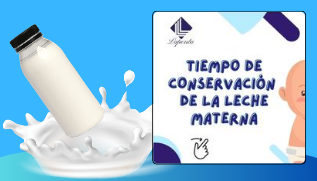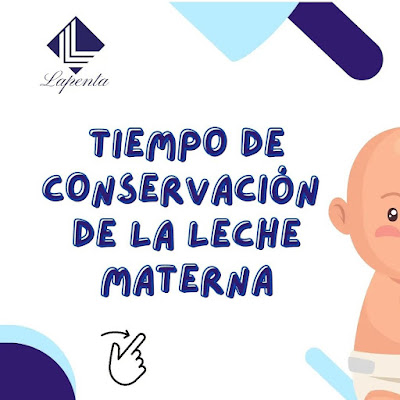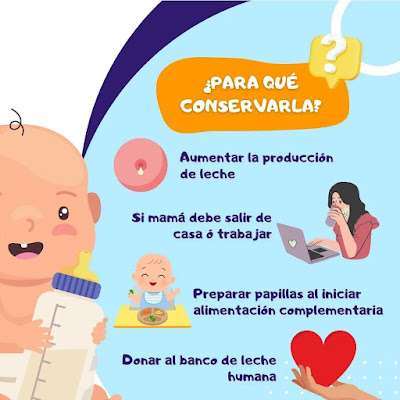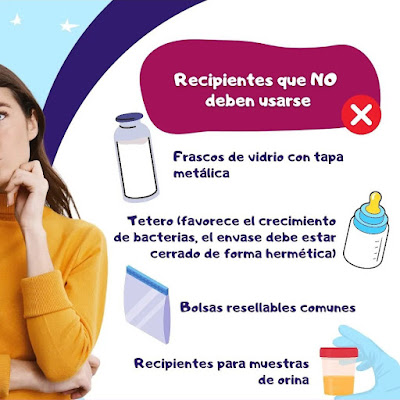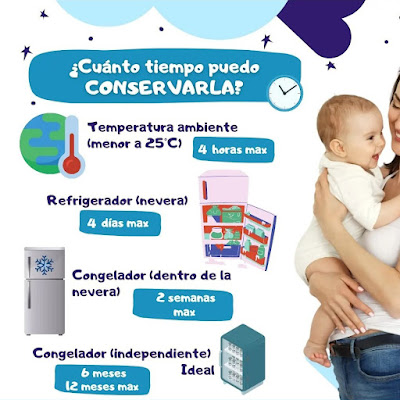Consejos para la Conservación
de la leche Materna
Tips for preservation
of Maternal breast milk
La leche materna se puede conservar por tiempos determinados, dependiendo del método a utilizar y se hace por variados motivos como:
Utilización posterior, debido a ocupaciones de la madre, aumentar la producción de leche, donar la leche a bancos maternos, etc.
Para conservar la leche materna hay que tener una buena higiene como lavarse bien las manos y los utensilios a utilizar para ello.
Los utensilios a utilizar para conservar la leche materna deben ser adecuados,entre ellos figura, los envases de vidrio con tapa de rosca, contenedores plásticos libres de BIFENOL (BFA) y los recipientes propios para los extractores de leche.
Recipientes que no deben utilizarse: teteros, frascos con tapa metalica, bolsas de plástico reciclables, recipientes recolectores de orina, recipientes metálicos.
La temperatura a conservar debe ser de 16 a 29 grados Centígrados, (ideal 25) máximo 4 horas. Si la coloca en la nevera (no en el congelador), maximo 4 dias, si la coloca en el congelador de la nevera puede durar 2 semanas, y en congeladores individuales de 6 a 12 meses, con un promedio de 9 meses. En la nevera no se debe guardar en la puerta, se guarda en la parte trasera.
Al reutilizar la leche NO debe calentarse en microondas, ni al fuego directo, porque se desnaturaliza perdiendo sus nutrientes. Lo ideal es calentar o descongelar con el famoso "baño María" colocándola en un recipiente y este en otro recipiente con agua que es la que va a recibir el fuego de la cocina.
Es importante marcar los envases con la fecha en la que se extrajo la leche y usar primero la leche que tiene más días de extraída.
Antes de alimentar al bebé, usted debe medir la temperatura de la misma dejando caer unas gotas sobre su propia muñeca, o utilizar un termómetro estéril, la leche debe estar tibia, no caliente.
Una vez descongelada la leche hay que utilizarla, pues NO se debe congelar de nuevo, se pierden las propiedades nutritivas de la misma.
EDITORIAL ENGLISH

